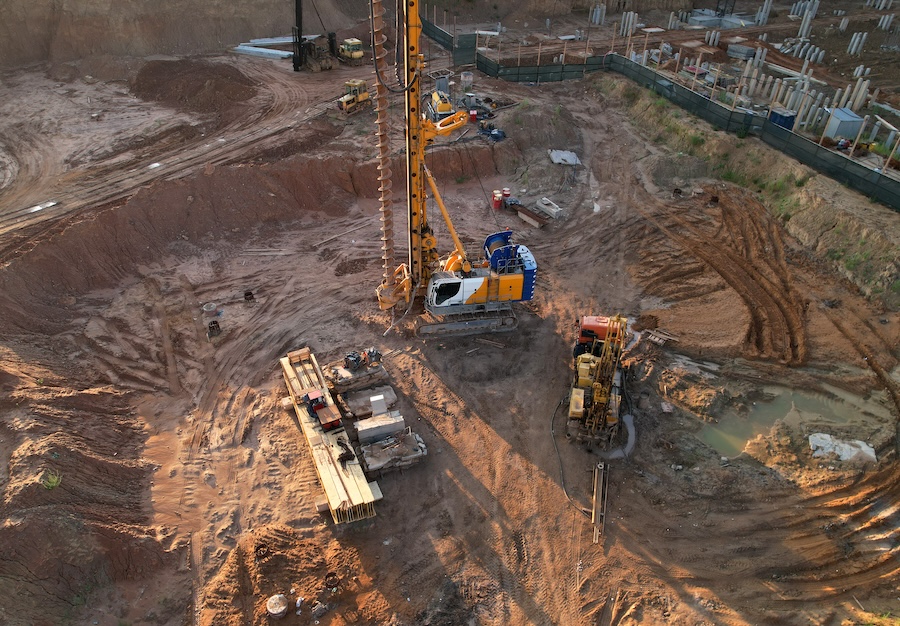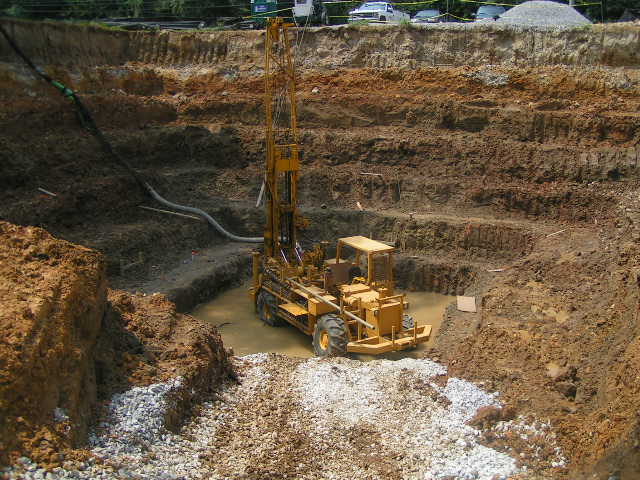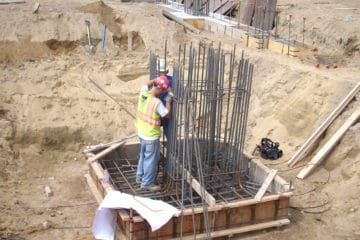Engineer of Record: What You Required to Find Out About Their Responsibilities and Influence
Engineer of Record: What You Required to Find Out About Their Responsibilities and Influence
Blog Article
The Interdisciplinary Approaches in the Geotechnical Sector: Bridging the Void Between Engineering, Geology, and Environmental Scientific Research for Optimal Project Results
The combination of design, geology, and ecological scientific research within the geotechnical market is not merely beneficial; it is essential for attaining ideal job results. What approaches might emerge to facilitate this essential partnership and enhance the effectiveness of geotechnical techniques?
Relevance of Interdisciplinary Partnership
The significance of interdisciplinary cooperation in the geotechnical market can not be overstated. Effective geotechnical projects require the combination of diverse experience from different fields, including design, geology, and environmental science. This partnership makes sure that all elements of a task are considered, causing extensive solutions that deal with intricate difficulties.
When functioning in isolation,Interdisciplinary partnership promotes development by enabling experts to share understandings and approaches that may not be obvious. By leveraging the toughness of numerous techniques, groups can identify prospective risks, enhance layout procedures, and improve the sustainability of geotechnical jobs. Moreover, such collaboration promotes an all natural understanding of site-specific conditions, which is vital for precise analysis and decision-making.
The complexity of geotechnical projects requires a worked with technique to analytic. Eventually, interdisciplinary collaboration is crucial for progressing finest methods and accomplishing excellence in the geotechnical sector.
Secret Roles of Each Technique
Partnership among numerous disciplines is not simply helpful; it is crucial for the successful execution of geotechnical jobs. Each self-control-- engineering, geology, and environmental scientific research-- plays a distinctive yet interconnected role that adds to project efficiency and sustainability.
Geotechnical engineers are primarily in charge of creating structures and making certain architectural honesty. They evaluate soil and rock residential properties to assess load-bearing capacities, providing vital data for secure building techniques. Their know-how makes it possible for the formula of cutting-edge options to complex difficulties.

Ecological scientists assess the possible effects of construction on ecological communities and water resources. They conduct environmental assessments and establish mitigation strategies to lessen adverse effects. By incorporating ecological considerations, they make certain compliance with policies and promote sustainability throughout the project lifecycle.
Study of Successful Integration
Successful combination of geotechnical techniques can be exemplified via different study that highlight the performance of teamwork in attending to complicated engineering challenges. One remarkable instance is the construction of the Hong Kong-- Zhuhai-- Macau Bridge, where a collective method involving geotechnical design, geology, and ecological science was important. Rock hounds and designers operated in unison to examine the seabed problems and maximize the structure layout, making certain stability and reducing ecological impact.
An additional impactful situation is the renovation of incline security in the San Francisco Bay Area, where an interdisciplinary team integrated geotechnical analysis with environmental evaluations. By incorporating geological surveys and hydrological researches, the team properly recognized possible landslide risks and applied effective reduction actions, improving safety and sustainability.
Additionally, the redevelopment of Brownfield sites often calls for a multidisciplinary technique. In one case in Chicago, collaboration amongst geotechnical designers, environmental scientists, and urban organizers led to the effective remediation of contaminated dirt, permitting the safe makeover of the site into an area park. These situation research studies illustrate that interdisciplinary collaboration not only addresses technical difficulties but additionally promotes innovative options that benefit both tasks and communities.
Obstacles in Multidisciplinary Projects

Moreover, coordinating schedules and workflows amongst different groups can be troublesome, especially when each discipline has special job landmarks and deliverables. This misalignment can result in delays and increased costs. The obstacle of resource allotment also impends huge; guaranteeing that specific knowledge is offered at essential junctures needs cautious planning and foresight.
Lastly, regulative compliance presents one more considerable challenge. Each discipline may deal with various governing structures, navigate to these guys and lining up these needs to fulfill project goals can be taxing and intricate. Resolving these challenges requires solid leadership and efficient interaction methods to foster cooperation and guarantee that multidisciplinary teams work cohesively towards shared goals.
Future Trends in Geotechnical Practices
As the geotechnical market develops, emerging trends are improving methods to resolve the difficulties faced in multidisciplinary jobs - consulting engineer. One substantial pattern is the boosted assimilation of sophisticated innovations, such as expert system and maker learning, into geotechnical evaluation and style. These modern technologies enhance predictive modeling and risk evaluation, making it possible for designers to make more informed decisions throughout the job lifecycle

Furthermore, the adoption of electronic doubles and real-time surveillance systems is coming to be extra common. These devices help with ongoing evaluation of soil problems and structural performance, allowing for prompt treatments when concerns arise.
Verdict
Finally, the integration of design, geology, and ecological science is important for accomplishing optimal end results in the geotechnical sector. Interdisciplinary partnership promotes development, improves analytical abilities, and lines up technological needs with ecological sustainability. Effective instance research studies highlight the advantages of this approach, while acknowledging the difficulties faced in multidisciplinary tasks. why not try these out Looking in advance, accepting these collective techniques will be necessary for browsing future patterns and progressing the area of geotechnical engineering.
The integration of engineering, geology, and environmental science within the geotechnical sector is not just helpful; it is important for achieving optimal job results. Efficient geotechnical jobs call for the assimilation of varied proficiency from various areas, consisting of design, geology, and ecological science.Browsing the intricacies of multidisciplinary tasks in the geotechnical market presents numerous substantial challenges.As the geotechnical market develops, emerging patterns are reshaping methods to resolve the difficulties faced in multidisciplinary tasks. Geotechnical engineers are significantly teaming up with environmental scientists to guarantee that projects line up with sustainability goals and abide with regulative demands.
Report this page